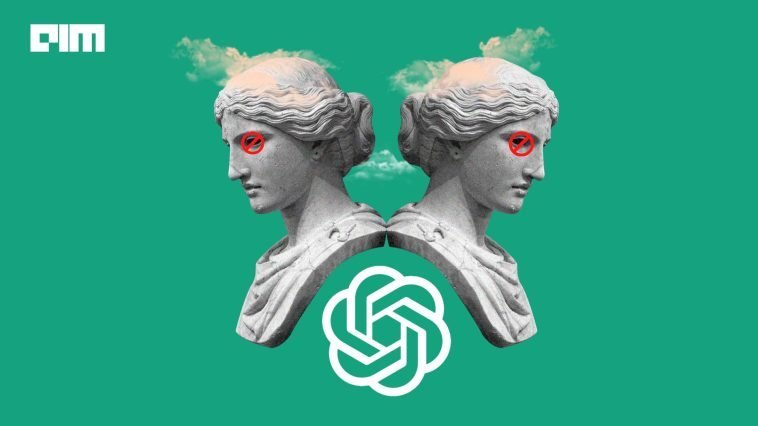Introduction.
One of the most popular and powerful language models used for developing chatbots is ChatGPT, based on OpenAI’s GPT-3.5 architecture.
Building a chatbot with ChatGPT allows you to create an AI-powered conversational agent that can understand and respond to user queries in a human-like manner.
Whether you’re a developer, a business owner, or simply curious about exploring the world of chatbots, this guide will walk you through the process of building your chatbot using ChatGPT.
How Do I Build a Chatbot Using ChatGPT?
Chatbots have revolutionized the way businesses interact with their customers. They provide real-time support, improve customer service, and automate various tasks.
Among the numerous options available, ChatGPT, based on OpenAI’s GPT-3.5 architecture, has emerged as a powerful tool for building intelligent and conversational chatbots.
In this step-by-step guide, we will walk you through the process of building your chatbot using ChatGPT.
1. Understanding ChatGPT.
Before diving into building a chatbot, it’s essential to familiarize yourself with ChatGPT. It is a language model that uses deep learning techniques to generate human-like responses.
ChatGPT understands context, follows the conversational flow, and can provide relevant and coherent answers.
2. Defining the Purpose and Scope.
Clearly defining the purpose and scope of your chatbot is crucial. Determine what tasks your chatbot will handle and what goals you aim to achieve.
Is it for customer support, lead generation, or providing information? Having a well-defined purpose will help you structure your chatbot’s capabilities and responses.
3. Gathering and Preparing Data.
To train your chatbot effectively, you need a dataset of conversational examples. Collect relevant conversations or create synthetic dialogue data that aligns with your chatbot’s purpose.
Ensure that your dataset covers a wide range of potential user inputs and includes diverse responses.
4. Fine-tuning ChatGPT.
To make ChatGPT suitable for your specific chatbot, you need to fine-tune it using your collected dataset.
Fine-tuning involves training the model on your data to adapt its responses to your desired context and tone. You can use OpenAI’s fine-tuning guide to help you through this process.
5. Designing the Conversation Flow.
An effective chatbot provides a seamless conversational experience. Design a conversation flow that guides users through a series of well-defined steps or prompts.
Determine how the chatbot will handle user queries and decide on appropriate responses based on the context.
6. Integrating with a Chatbot Platform.
To deploy your chatbot and make it accessible to users, you’ll need to integrate it with a chatbot platform or framework.
There are various platforms available, such as Facebook Messenger, Slack, or custom web-based interfaces.
Choose the platform that best suits your requirements and follow their integration guidelines.
7. Testing and Iteration.
Thoroughly test your chatbot to ensure it functions as intended. Engage in simulated conversations and identify areas where the responses can be improved.
Continuously iterate and refine your chatbot based on user feedback and real-world usage to enhance its performance and user experience.
8. Monitoring and Improving Performance.
Once your chatbot is live, it’s essential to monitor its performance. Track key metrics like user engagement, response accuracy, and customer satisfaction.
Analyze user feedback and identify areas where your chatbot can be improved. Leverage analytics tools and user feedback mechanisms to gather insights and make data-driven enhancements.
9. Adding Natural Language Understanding (NLU).
To make your chatbot more robust and capable of understanding user intent, consider integrating a natural language understanding (NLU) component.
NLU helps your chatbot accurately interpret user queries, extract relevant information, and provide context-aware responses.
Popular NLU frameworks like Rasa or Dialogflow can be seamlessly integrated with ChatGPT.
10. Scaling and Maintenance.
As your chatbot gains popularity and handles more interactions, ensure it can handle increased traffic and scale effectively. Monitor server resources and response times to guarantee a smooth user experience.
Regularly update your chatbot’s knowledge base to keep it up to date with changing information or user preferences.
11. Ethical Considerations.
While building a chatbot, it’s crucial to prioritize ethical considerations. Ensure your chatbot respects user privacy, complies with data protection regulations, and avoids biased or discriminatory responses.
Implement appropriate safeguards to protect user data and consider incorporating features like opt-in/opt-out mechanisms or transparency in data usage.
12. Continuous Improvement.
Building a chatbot is an ongoing process. Continuously gather user feedback, analyze user interactions, and identify areas for improvement.
Leverage user insights to refine the chatbot’s responses, expand its knowledge base, and enhance its conversational abilities. By iterating and evolving your chatbot, you can provide an exceptional user experience.
Conclusion.
Building a chatbot using ChatGPT opens up a world of possibilities for enhancing customer interactions and automating tasks.
By following the step-by-step guide outlined above, you can create a chatbot that engages users, delivers valuable information, and provides efficient support.
Remember to understand ChatGPT’s capabilities, define a clear purpose, gather and prepare data, fine-tune the model, design an effective conversation flow, integrate with a platform, and continuously monitor and improve its performance.
With dedication and an iterative approach, you can develop a powerful chatbot that drives customer satisfaction and supports your business objectives.






GIPHY App Key not set. Please check settings